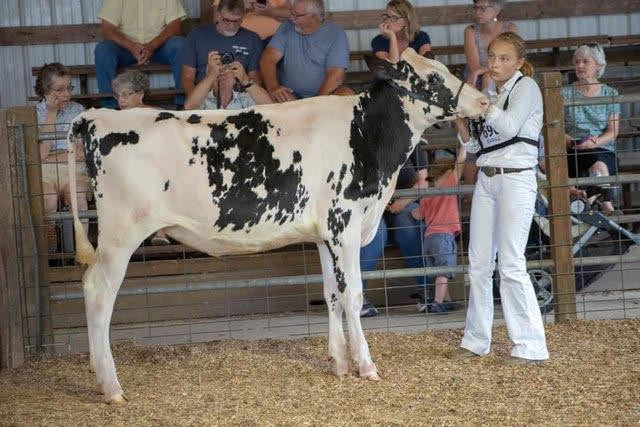Right now is prime time for 4-H, FFA members, and fair exhibitors to get their livestock prepped and ready to show at the fair. There’s a lot that goes into an event like this and we’d like to give these hard workers the recognition they deserve! Today, we’re going to break down some of the big things that go into showing livestock. This is NOT a how-to post. This is really us showing off these hard working guys and gals and their dedication for taking care of these animals not just for the summer fairs, but all year long!
Becoming an exhibitor at a livestock show takes a passion and love for animals and a lot of training to get your animal show-ready. For exhibitors and spectators alike, livestock shows are one of the most anticipated parts of a fair. Preparing your animal for a show begins months in advance. Great care is needed in feeding your animal, practicing showmanship, and making sure your animal is healthy.
When taking animals to the fair for exhibition or show, making sure they are in good health is the number one priority. Each animal requires proof of vaccination and a health certificate from the veterinarian. This helps keep all the animals at the show healthy, and prevents the spread of diseases between farms. It’s important to keep the animals looking nice so the public can see that they are being well cared for. Many people who are not familiar with the livestock industry come to the fair to see all the “farm animals”. This is a chance to showcase what we do and how we care for the animals.
One of the biggest factors livestock owners need to consider for their animals to keep them healthy and to reach their goal weight is selecting a feeding program. The right feed depends on the animal’s growth rate, body condition, frame, body type, and rib shape. Here at Martin’s Feed Mill, we provide a variety of options and can help pick the feed that’s right for your animal.
When watching ringside at the county fair, you may wonder why the cow you thought was prettier did not win the class. When judging the breeding classes, a judge is looking for standards set by the breeds’ national associations and the ability for the animal to pass along better genetic traits than they have. They look for the correctness of angles, straightness of the spine and for lactating dairy animals, the mammary system, just to name a few traits.
In the market classes, the animals are raised for meat. The judge is looking for the animal that will produce the most, the tastiest and the best quality of meat. This is difficult, as you are judging the live animal and not the carcass on the rail. For market classes, the judge is evaluating the animal as if it were being harvested that day. They look for muscle shape, fat coverage and functionality. If it can’t walk well, it will have a hard time getting to the feed bunk in a commercial setting. The judge looks at the feet and legs and makes sure the animal has a solid leg, and hooves that will sustain it throughout its life.
To be show ready, the exhibitor has to practice showmanship with their animal. From halter breaking, practicing cues, to building trust. Showmanship starts the day the animal is born in some cases, or when it is selected as a project animal after weaning. The exhibitor spends time every day with the animal, from picking out the correct feeding ration to keeping the animal clean.
Showmanship is a 365-day job. The exhibitor works daily on training the animal, grooming and correctly feeding the animal. During the actual showmanship event at the fair, the exhibitor is judged on how well they have groomed and prepared the animal and how well they can handle the animal and work together as a team. The exhibitor is asked questions about the animal — from the date of its birth and how much it weighs to what the animal eats and knowledge on the parts of the animal.
When the exhibitor takes the animal out into the ring, it’s important that the animal knows to behave themselves. This involves working with the animal and teaching them cues so they know what to do. Practice builds confidence for both the exhibitor and the animal. Working with animals is always challenging but the more you interact with them, the better you can understand and interact with them and vice versa. The animal needs to build trust just as much as the owner.
Are you ready for the fair?!
Whether you’re an exhibitor or a spectator, it’s an exciting time of year that we’ve been anxiously waiting for. When you walk through the barns this year, be sure to congratulate the kids on a job well done! It takes a lot of behind the scenes work to get to the fair!
Attending the Centre County Grange Fair? You’re in luck because we’re giving away 2 tickets and a parking pass to ONE lucky person!!!
With every purchase made IN-STORE at Martin’s Feed Mill throughout the month of July, you'll receive an entry to win!
Winner will be announced on August 1st. Stop into the store today!
